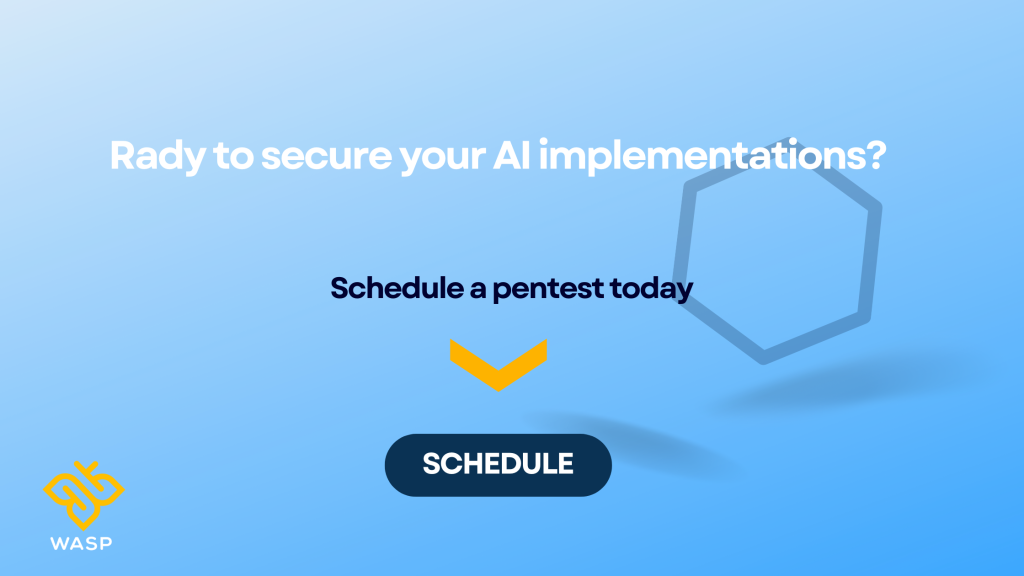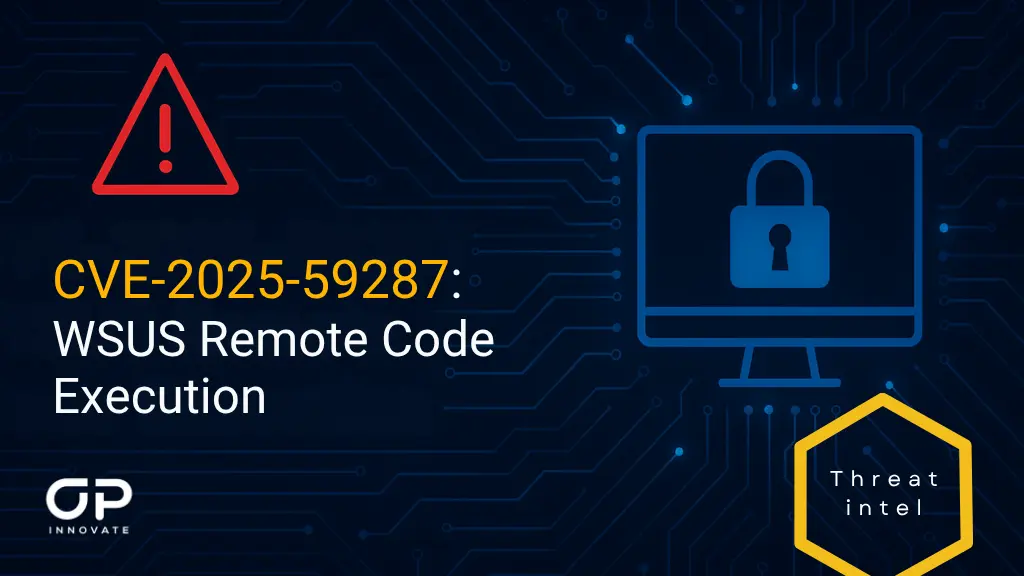In the most recent “The State of AI” report by McKinsey & Co., 78% of respondents revealed that their organization uses AI in at least one business function. With such quick and widespread adoption, organizations must proactively address the security risks posed by large language models (LLMs) to ensure their implementations remain resilient and compliant.
Let’s examine some of the most common LLM vulnerabilities attackers can exploit, and the safeguards you should incorporate to stay protected.
Note: The listed vulnerabilities were taken from the 2025 edition of the OWASP Top 10 for LLM Applications. Download the full list here.
Most Common LLM Vulnerabilities & How to Prevent Them
According to The Open Worldwide Application Security Project (OWASP), the most commonly exploited LLM vulnerabilities are:
1. Prompt injections
Prompt injection occurs when an attacker intentionally manipulates or injects malicious content into the input prompts of an LLM-based system. These attacks exploit insufficiently sanitized user inputs, tricking the LLM into executing unintended or harmful actions. For example, in chatbot interfaces or customer support systems, malicious prompts could lead the model to generate offensive content, malicious scripts, or even leak sensitive information.
How Attackers Exploit It:
- Injecting hidden instructions within seemingly harmless inputs.
- Crafting inputs to evade model safeguards, prompting it to perform restricted actions (e.g., providing privileged system information).
Prevention Steps:
- Implement strict input validation and sanitization to filter out malicious prompts.
- Use context-aware security filters to detect anomalous prompts or instructions.
- Limit the scope of the model’s actions to predefined tasks and enforce strict permissions.
2. Sensitive information disclosure
Sensitive information disclosure occurs when an LLM unintentionally reveals confidential, proprietary, or personally identifiable information (PII) due to inadequate data handling, training on private data, or insufficient output validation.
How Attackers Exploit It:
- Attackers craft prompts designed to bypass security controls, coaxing the LLM into sharing restricted data from its training dataset or internal memory.
- Manipulating model prompts to retrieve cached or contextually stored sensitive information, including passwords, API keys, or customer records.
Prevention Steps:
- Implement robust data anonymization and pseudonymization practices in training datasets.
- Deploy advanced data-leakage detection and prevention mechanisms, ensuring the model’s outputs are routinely scanned for confidential information.
- Restrict and monitor access to sensitive data that models might interact with directly.
3. Supply Chain Attacks
Supply chain vulnerabilities exist when attackers infiltrate the third-party systems involved in the creation, deployment, or management of LLMs. Compromises can occur in data collection, software libraries, API services, or infrastructure hosting these AI models.
How Attackers Exploit It:
- Injecting malicious code or datasets into third-party training data or repositories.
- Compromising popular open-source libraries, model checkpoints, or container registries used during LLM deployment or updates.
Prevention Steps:
- Regularly audit third-party suppliers and resources for security compliance.
- Employ Software Bill of Materials (SBOM) to track and verify all components and dependencies involved in LLM development and deployment.
- Utilize strong integrity verification protocols and digital signatures to authenticate model checkpoints and software updates.
4. Data and Model Poisoning
Data poisoning involves maliciously injecting false, misleading, or biased data into training datasets, causing the LLM to produce incorrect or harmful responses. Model poisoning similarly affects fine-tuning or continuous training mechanisms.
How Attackers Exploit It:
- Adding malicious samples to open or crowdsourced training datasets that influence the model to generate biased or dangerous outputs.
- Exploiting feedback loops (such as Reinforcement Learning with Human Feedback) by submitting deliberately misleading feedback, thus influencing model behaviors over time.
Prevention Steps:
- Employ thorough data verification and cleaning protocols before integrating data into training sets.
- Continuously monitor and benchmark models for signs of unusual behaviors, bias drift, or compromised integrity.
- Use adversarial validation methods, including penetration testing specifically targeted at poisoning vulnerabilities.
5. Improper Output Handling
Improper output handling vulnerabilities occur when outputs from LLMs are not sufficiently validated or sanitized before being passed on to downstream systems or users, potentially causing malicious code execution or unintended actions.
How Attackers Exploit It:
- Exploiting integrations where an LLM-generated output is directly executed, such as automatic script generation or configuration file updates.
- Leveraging maliciously crafted outputs to perform injection attacks downstream (e.g., SQL injections or XSS).
Prevention Steps:
- Implement strict output validation, sanitization, and encoding practices to ensure generated content cannot trigger harmful actions.
- Enforce separation of duties—LLM outputs should require human or automated security approval before execution or integration into critical processes.
- Employ automated scanning and filtering mechanisms to detect potentially dangerous outputs.
6. Excessive Agency
Excessive agency occurs when an LLM is given too much autonomy, allowing it to independently perform critical or risky actions without adequate human oversight or restrictions.
How Attackers Exploit It:
- Attackers manipulate inputs that prompt the LLM into unauthorized actions, such as approving financial transactions or accessing sensitive records.
- Leveraging an LLM’s API or workflow automation capabilities to perform unintended, privileged operations.
Prevention Steps:
- Clearly define and restrict permissions for LLM-integrated tasks and APIs.
- Enforce strict human oversight and verification of any high-risk or privileged actions suggested or initiated by the model.
- Continuously monitor and log LLM activities to detect and quickly respond to misuse attempts.
7. System Prompt Leakage
System prompt leakage refers to when internal instructions or system-level guidance provided to the LLM become exposed to end-users, providing attackers insight into how to manipulate the model.
How Attackers Exploit It:
- Attackers exploit prompts that cause the model to inadvertently reveal internal instructions or security configurations.
- Using leaked prompts to craft more sophisticated injection attacks.
Prevention Steps:
- Clearly separate user inputs from system-level instructions through explicit prompt design and isolation techniques.
- Regularly test model interactions for prompt leakage, applying robust sanitization and validation methods to prevent inadvertent disclosures.
8. Vector and Embedding Weakness
Attackers exploit weaknesses in embedding algorithms or vector databases used in conjunction with LLMs. Embedding vectors can be manipulated to return misleading or malicious context to the model.
How Attackers Exploit It:
- Poisoning vector databases with corrupted or misleading embeddings, skewing the retrieval results, and thus influencing LLM outputs negatively.
- Using carefully crafted prompts that exploit biases or vulnerabilities in vector similarity calculations.
Prevention Steps:
- Maintain strict access controls and integrity checks for embedding databases and associated retrieval systems.
- Employ periodic audits and adversarial testing to identify corrupted or compromised embedding vectors.
- Implement robust anomaly detection and monitoring mechanisms for embedding retrieval processes.
9. Misinformation
Misinformation vulnerabilities refer to the intentional manipulation of LLM-generated content to spread false or misleading information, negatively impacting users or organizational reputation.
How Attackers Exploit It:
- Manipulating prompts to produce believable but false information.
- Influencing reinforcement loops so the model is biased towards inaccurate or harmful content.
Prevention Steps:
- Use fact-checking mechanisms, including secondary validation and trusted data references, to verify LLM outputs.
- Implement clear labeling of generated content as AI-generated, especially in sensitive or critical contexts.
- Train models explicitly to recognize and flag potentially harmful or misleading outputs.
10. Unbounded Consumption
Unbounded consumption occurs when attackers exploit LLM resource usage to exhaust computational resources, causing system degradation or denial-of-service (DoS) conditions.
How Attackers Exploit It:
- Repeatedly issuing resource-intensive queries designed to overwhelm LLM hosting infrastructure.
Triggering excessive model complexity through prompts that cause prolonged processing or memory consumption.
Prevention Steps:
- Implement strict rate limiting and resource quota management per user or application.
- Continuously monitor resource consumption and impose guardrails that terminate or throttle excessively demanding tasks.
- Deploy scalable infrastructure solutions that mitigate the impact of resource exhaustion attacks through load balancing and automated failover capabilities.
Proactive LLM Security With OP Innovate
OP Innovate can help you proactively secure your organization’s AI and LLM implementations through expert penetration testing and continuous security monitoring.
Our team is CREST-certified, consisting of seasoned penetration testers who possess deep expertise in assessing LLM systems and rigorously identifying vulnerabilities such as prompt injections, data poisoning, sensitive information leaks, and supply chain weaknesses.
By simulating real-world attack scenarios, we evaluate your model deployments comprehensively, uncovering vulnerabilities before they can be exploited by malicious actors.
Additionally, our proprietary WASP platform delivers continuous threat exposure management by proactively monitoring interactions, promptly identifying anomalous activities, and offering real-time mitigation support integrated with your dev workflow.
With OP Innovate, your organization can confidently leverage LLMs, assured by expert support, rigorous testing, and the proactive protection of the WASP platform.










